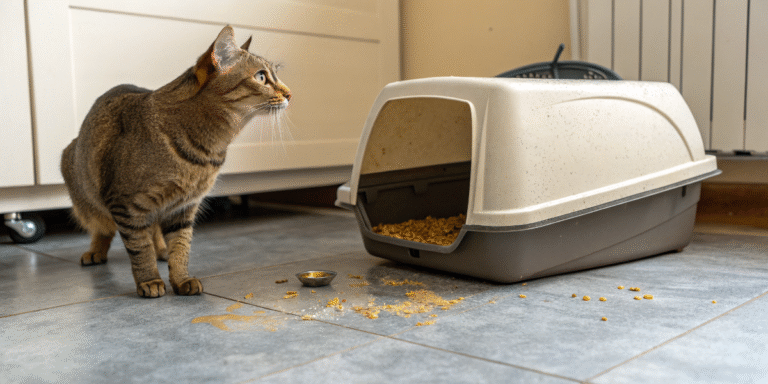Male vs Female Cats: The Surprising Differences That Could Change Your Mind
Male vs Female Cats: The Surprising Differences That Could Change Your Mind
I’ll never forget the day I walked into the animal shelter, convinced I knew exactly what kind of cat I wanted. “Female,” I told the volunteer confidently. “They’re cleaner, more independent, and less aggressive.” Boy, was I in for a surprise. Three cats later – two males and one female – I’ve learned that everything I thought I knew about cat gender differences was only half the story.
If you’re considering adding a feline friend to your family, or if you’re trying to understand your current cat’s quirky behaviors, you’ve probably wondered: does gender really matter? The answer might surprise you. While every cat is unique, there are some fascinating patterns that emerge when we look at how male and female cats behave differently – and understanding these differences can help you make better decisions for both you and your furry companion.
🐱 Key Takeaways
- Male cats tend to be more openly affectionate and social, while females are more reserved but equally loving
- Territory marking and spraying are significantly more common in males due to higher testosterone levels
- Female cats are typically more focused hunters, while males approach hunting with playful enthusiasm
- Spaying and neutering dramatically reduces most gender-based behavioral differences
- Both genders make wonderful pets – it’s about finding the right match for your lifestyle
The Territorial Truth: Why Your Male Cat Acts Like a Tiny Sheriff
Let’s start with one of the most noticeable differences: territorial behavior. If you’ve ever wondered why your male cat seems to patrol the house like he’s running security detail, there’s a scientific reason behind it. Male cats have elevated testosterone levels that drive them to protect their territory – and yes, your living room counts as territory worth defending.
This isn’t just about being bossy. In the wild, male cats were responsible for keeping intruders away from their territory and potential mates. Your domestic male cat might not face the same threats, but those instincts are still hardwired into his DNA. This often translates into behaviors like:
- More frequent scent marking (unfortunately, this includes urine spraying)
- Heightened alertness to outdoor cats or strange noises
- Guarding favorite spots, food bowls, or even their favorite humans
Female cats, on the other hand, assert dominance more subtly. They’re strategic about it. You’ll often find them claiming the highest spots in the house – the top of the bookshelf, the back of the couch, or that perfect windowsill. This behavior traces back to their wild ancestry, where elevation meant safety from predators and a prime hunting vantage point.
The Affection Factor: Cuddle Bugs vs. Dignified Companions
Here’s where my own assumptions got completely turned upside down. I always thought female cats were the more affectionate ones, but research shows that male cats are actually more likely to initiate physical contact with their humans. They’re the ones wrapping around your legs as you walk, jumping onto your lap uninvited, and generally acting like furry little attention-seekers.
There’s a beautiful reason for this difference. In the wild, male cats don’t have the responsibility of raising kittens, which gives them more freedom to be social and relaxed. This translates into domestic life as cats who are generally more outgoing and physically affectionate.
Female cats show affection differently. They’re more reserved, more dignified in their approach to love. When a female cat chooses to show you affection – whether it’s a slow blink, a gentle headbutt, or simply sitting quietly beside you – it’s incredibly meaningful. They’re not less loving; they’re just more selective about how and when they express it.
Hunting Styles: The Focused Strategist vs. The Playful Warrior
Watching my cats play has taught me more about their personalities than any behavior guide ever could. My female cat, Luna, will sit motionless for what feels like hours, watching a feather toy with laser focus. When she finally pounces, it’s with surgical precision. My male cat, Oliver, approaches the same toy like it’s the most exciting thing that’s ever happened to him – all energy and enthusiasm, sometimes forgetting to actually catch the thing he’s chasing.
This difference stems from their evolutionary roles. Female cats were the primary hunters and providers for their offspring, requiring them to be efficient and successful. They had to bring home dinner, so every hunt mattered. This translates into play sessions that are more focused and intense – they’re practicing real skills.
Male cats, historically more focused on territory defense than hunting, approach play with a sense of fun and practice for potential confrontations. They’re more likely to engage in high-energy, acrobatic play sessions that look more like joyful chaos than serious hunting practice.
The Spraying Situation: Let’s Talk About the Elephant in the Room
Nobody wants to talk about it, but we have to: male cats spray more, and their urine smells significantly stronger. I learned this the hard way when I first adopted an unneutered male cat. The smell was… unforgettable.
There’s actual science behind this. Male cat urine contains higher concentrations of a compound called phelanine, which breaks down into sulfur compounds when exposed to air. It’s their way of advertising their presence to potential mates and marking their territory. Think of it as their version of leaving a calling card – just a really smelly one.
Female cats do spray, but much less frequently. When they do, it’s usually a stress response rather than territorial marking. Changes in routine, new pets, or environmental stressors can trigger this behavior in females.
The Roaming Reality: Adventurers vs. Homebodies
Male cats are notorious escape artists. They hear the call of adventure (or more accurately, the call of potential mates) and suddenly your indoor cat becomes Houdini. Intact males will travel surprisingly far distances, often putting themselves in danger, all in pursuit of romance.
Female cats roam too, but they’re more cautious about it. They tend to maintain smaller territories closer to home, prioritizing security over exploration. During mating season, however, even the most homebodied female might venture further than usual.
The Game-Changer: How Spaying and Neutering Changes Everything
Here’s where the story gets really interesting. Most of the dramatic differences I’ve described apply primarily to intact cats. Spaying and neutering don’t just prevent unwanted litters – they fundamentally change behavior patterns.
After neutering, male cats typically become:
- Less likely to spray or mark territory
- More content to stay close to home
- Less aggressive overall
- Often more affectionate and relaxed
Spayed female cats experience changes too:
- No more heat cycles (and the yowling that comes with them)
- Reduced roaming tendencies
- Often become more social and affectionate
- Less stress-related behaviors
Social Butterflies vs. Selective Socializers
In my experience, male cats are often the greeters of the cat world. They’re more likely to approach visitors, seek out attention from strangers, and generally act like furry ambassadors for your household. This traces back to their more social nature in the wild.
Female cats are more selective with their social energy. They may be just as loving and bonded with their family, but they’re more likely to observe new situations from a distance first. This doesn’t make them antisocial – it makes them discerning.
Interestingly, female cats are often more susceptible to stress and anxiety, especially when it comes to changes in their environment. They thrive on routine and predictability, while males tend to be more adaptable to change.
So, Which Gender Should You Choose?
After living with both male and female cats, I’ve realized that the question isn’t “which gender is better?” but rather “which personality type fits better with your lifestyle?” A playful, social male cat might be perfect for a busy family with kids, while a more reserved, independent female might be ideal for someone who appreciates a calm, observant companion.
The most important factors aren’t really about gender at all – they’re about the individual cat’s personality, your living situation, and whether you’re prepared to provide proper veterinary care including spaying or neutering.
Remember: every cat is unique. I’ve met shy male cats and outgoing female cats that completely defied these general patterns. The best approach is to spend time with individual cats and see who you connect with, regardless of their gender.
What’s Your Experience?
Have you noticed personality differences between male and female cats? Do you have a preference based on your own experiences? Share your stories in the comments below – I’d love to hear about your feline companions and whether they fit these patterns or are wonderfully unique exceptions to the rule!
And if you found this helpful, consider sharing it with other cat lovers who might be making the big decision about their next furry family member.





